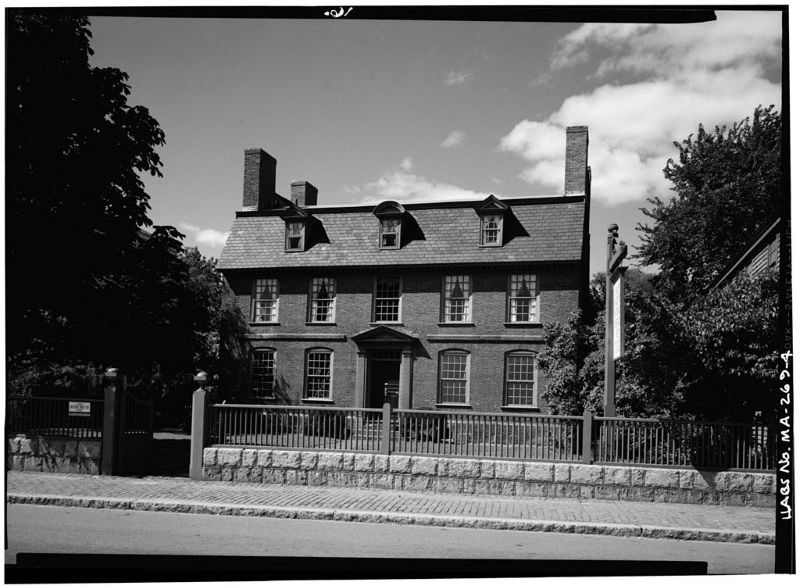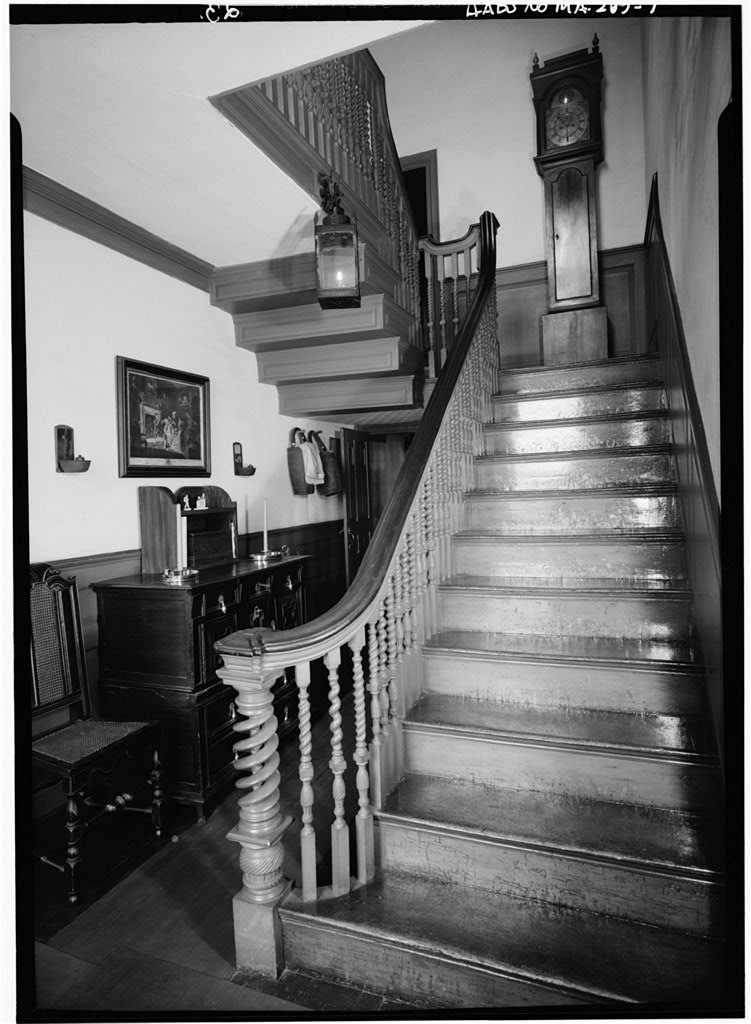Built in 1761-62, the Richard Derby House is the oldest surviving brick house in Salem, Massachusetts.
The house is a Georgian-style, two-story, brick house on Derby Street built by Captain Richard Derby as a wedding present for his son, Elias Hasket Derby.
It features a gambrel roof, four chimneys, dormer windows, a pedimented entrance, an eight-paneled door, and an unusually ornate staircase made of white pine with a hand-carved newel post and twister balusters. All of the rooms, except the kitchen, are paneled and painted in colors chosen by Captain Richard Derby.
Derby lived in the house with his wife, Elizabeth Crowninshield, seven children, and two slaves for the first 20 years of his marriage until his household outgrew it and he decided they needed a bigger home.
In 1780, Derby began building the Hawkes House next door, but the Revolutionary War stalled construction on the house, which prompted Derby to change his mind and buy an existing mansion on Washington Street instead.
In 1796, Derby sold the Derby House to local captain and merchant Henry Prince, who later built the West India Goods Store next to the house in the early 1800s. The Prince family lived in the Derby House until 1827.
After the Prince family sold the house, it changed hands a number of times before becoming a tenement house for the rest of the 19th century. The owner at the time closed off the main staircase in order to prevent tenants from using it and to protect it from being damaged.
In the early 20th century, the Society for the Preservation of New England Antiquities (SPNEA), now Historic New England, purchased the Derby House. In 1929, the society restored the house to its 18th-century appearance and placed the Weaver’s Guild of Boston in charge of it.
In 1937, SPNEA transferred the Derby House to the National Park Service, and it became a part of the Salem Maritime National Historic Site in 1938, which was the first national historic site in the country.
On August 16-17, 1938, a bolt of lightning hit the Derby House during a series of violent electrical storms that swept across Massachusetts, which caused some minor damage when it knocked a piece of the roof off the home, according to a news report in the Boston Traveler.
The Derby House is now open to the public as a historic house museum.
Sources:
“Votes Derby House For U.S. Monument.” The Boston Globe, 12 Mar. 1936, p. 8.
Prim, Mary Elizabeth. “Derby House Now Open to the Public.” The Boston Transcript, 18 May. 1929, p. 6.
“Perfect Colonial Staircase in Old Derby House, Salem.” The Boston Globe, 24 Apr. 1927, p. 78.
“Richard Derby House Restored by Society.” Marblehead Messenger, 12 April. 1929, p. 3.
“Tercentenary Pilgrimages – No. 11 The Richard Derby House, Salem.” The Boston American, 20 Jun. 1930, p. 4.
“Complete Sale of Derby Wharf.” The Boston Herald, 22 Aug. 1937, p. 24.
“Storm Loss Millions; Scores Hurt by Bolts.” The Boston Traveler, 17 Aug. 1938, p. 15.
“House Built in 1672 Struck by Lightening.” Fall River Herald News, 17 Aug. 1938, p. 6.
“Derby House Historical Marker.” Historical Marker Database, hmdb.org/m.asp?m=62546
“Historic Building Detail: SAL.2572 Derby, Richard House.” MACRIS, mhc-macris.net/details?mhcid=sal.2572


